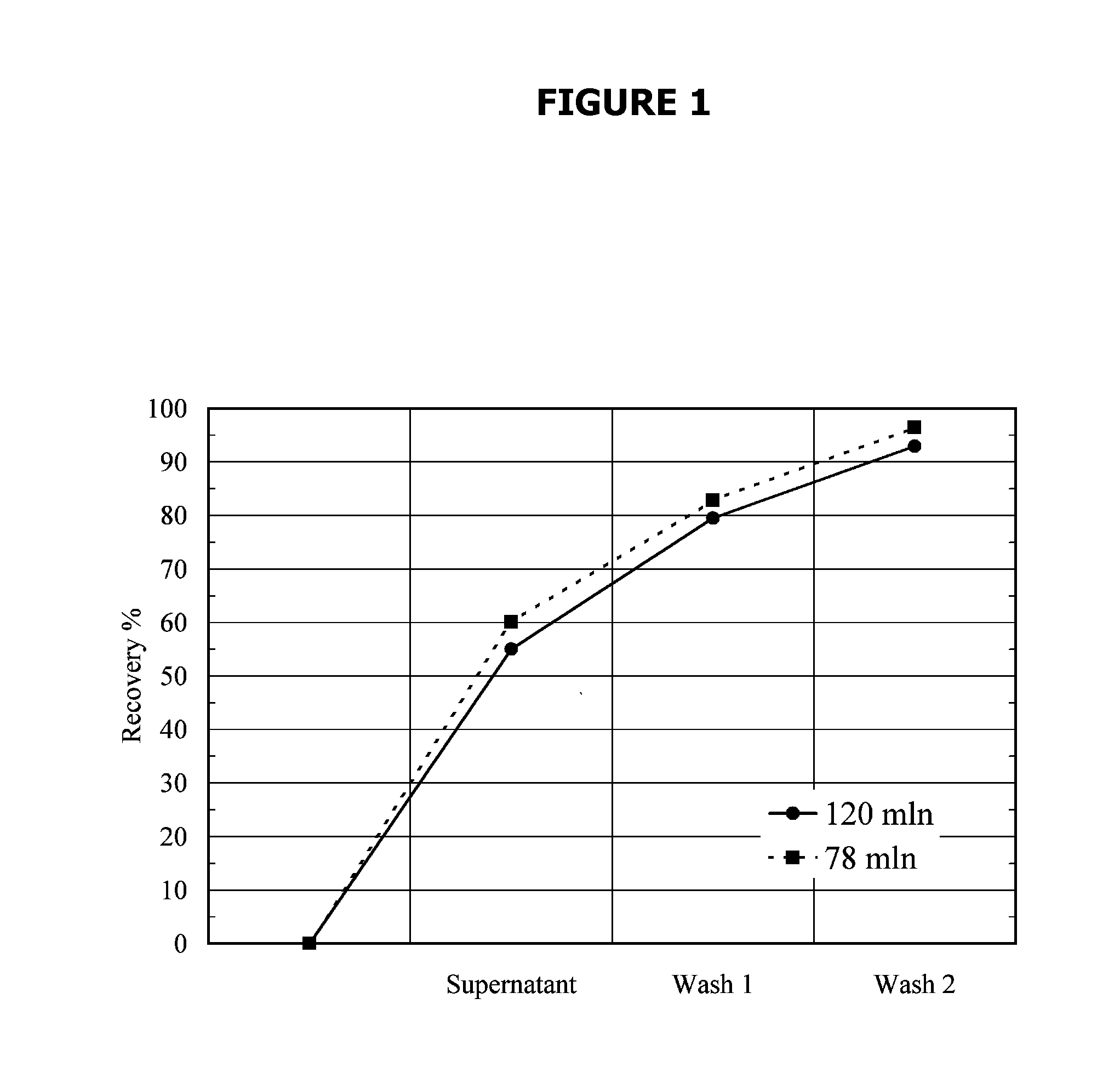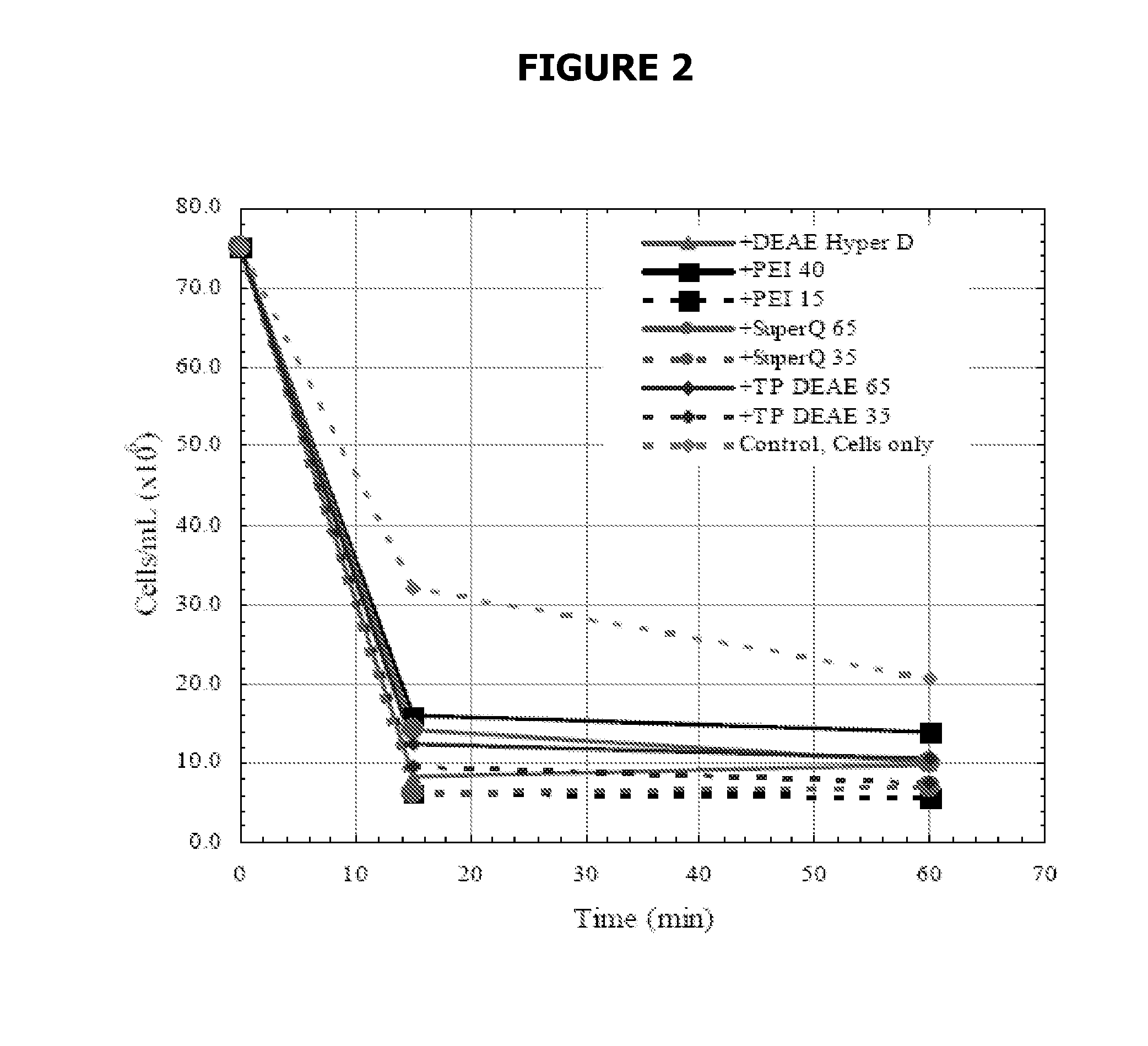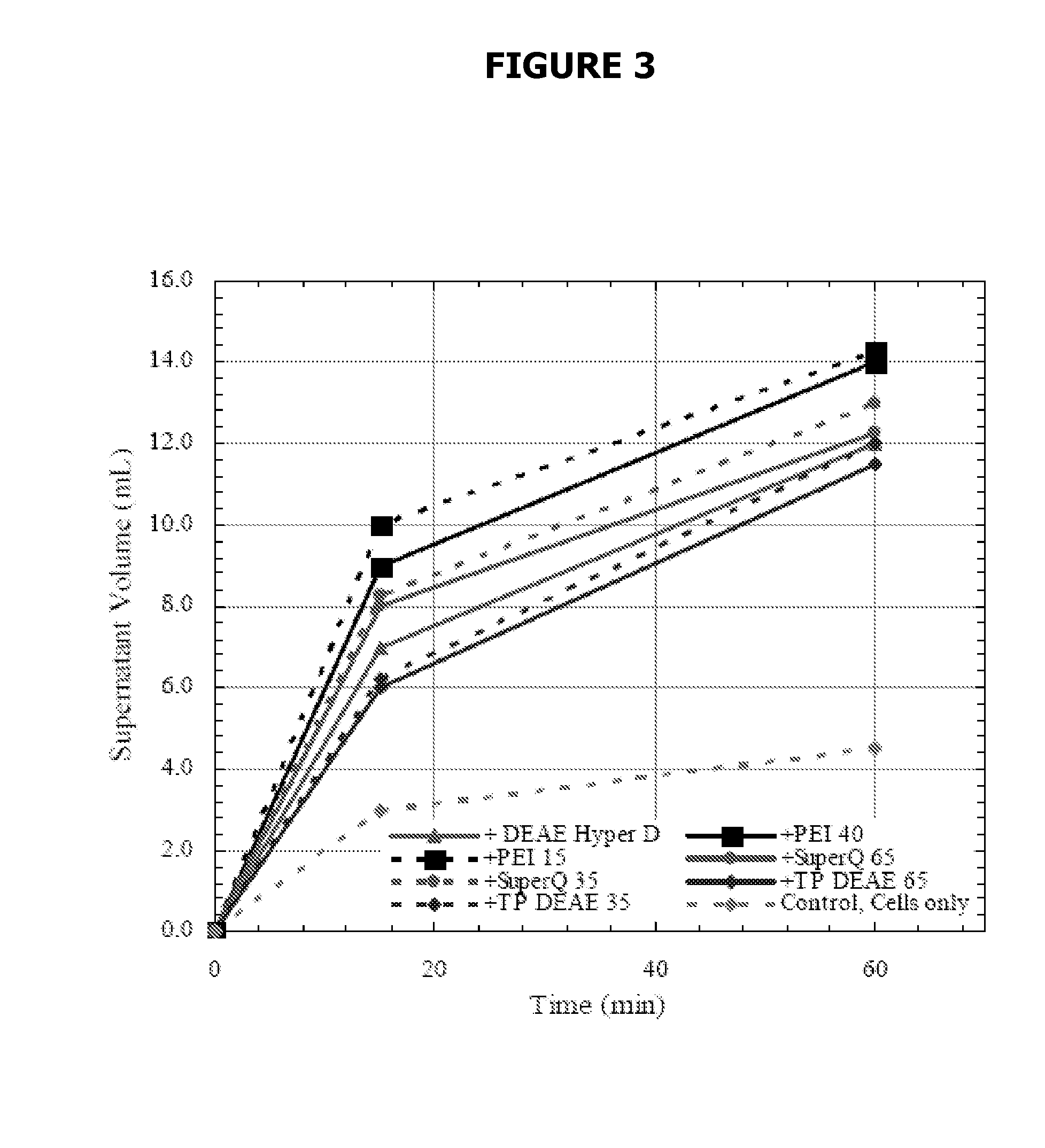Cell broth clarification and host cell protein removal
a technology of cell broth and host cells, which is applied in the field of cell broth clarification and host cell protein removal, can solve the problems of affecting the product recovery rate, the limitations of both centrifugation and filtration techniques, and the culture of upwards of 150 million cells/ml, so as to facilitate further cost-effective processing and facilitate the reduction of contaminants. , the effect of enhancing the cell settling
- Summary
- Abstract
- Description
- Claims
- Application Information
AI Technical Summary
Benefits of technology
Problems solved by technology
Method used
Image
Examples
example 1
Clarification with Low Cell Density
[0094]Different amounts of Si-PEI were added to individual vials containing 10 ml of cell culture. Xt=4.3×106 cells / ml. The cells were allowed to settle for 15 minutes. Only 5% (vol) of Si-PEI was needed to settle 97% of the cells. Adding 10% (vol) of Si-PEI settled 99% of the cells. Product recovery was 100%.
[0095]The addition of Si-PEI greatly reduced the time needed for the cells to settle. Also, the addition of Si-PEI resulted in a more compact pellet in comparison with the control (no Si-PEI added).
example 2
Clarification with Intermediate Cell Density
[0096]Different amounts of Si-PEI were added to individual vials containing 5 ml of cell culture. Xt=63.5×106 cells / ml. The cells were allowed to settle for 30 minutes. Adding 5% (vol) of Si-PEI settled 87% of the cells. Adding 10% (vol) of Si-PEI settled 89% of the cells. Adding 20% (vol) of Si-PEI settled 85% of the cells. In each case the resulting cell density was below 10×106 cells / ml, which is a suitable feed for depth filtration. Product recovery was 97%.
[0097]The addition of Si-PEI greatly reduced the time needed for the cells to settle. Also, the addition of Si-PEI resulted in a more compact pellet in comparison with the control (no Si-PEI added).
example 3
Clarification with High Cell Density
[0098]10% (vol) of Si-PEI was added to 345 ml of cell culture broth. Xt=123×106 cells / ml. Due to the high cell density two hours of settling were allowed. After these two hours the cell density in the resulting supernatant was 13.6×106 cells / ml. The pellet volume was 53% of the total volume (93% for the control where no Si-PEI was added). The supernatant was decanted and the pellet was washed twice with isotonic PBS with 1 hour of settling after each wash. Product recovery was 93% after the two washes. The total process time was 4 hours. After pooling the supernatants, the final process volume was 600 ml and the cell density was 9.9×106 cells / ml.
PUM
| Property | Measurement | Unit |
|---|---|---|
| specific particle density | aaaaa | aaaaa |
| densities | aaaaa | aaaaa |
| specific density | aaaaa | aaaaa |
Abstract
Description
Claims
Application Information
 Login to View More
Login to View More - R&D
- Intellectual Property
- Life Sciences
- Materials
- Tech Scout
- Unparalleled Data Quality
- Higher Quality Content
- 60% Fewer Hallucinations
Browse by: Latest US Patents, China's latest patents, Technical Efficacy Thesaurus, Application Domain, Technology Topic, Popular Technical Reports.
© 2025 PatSnap. All rights reserved.Legal|Privacy policy|Modern Slavery Act Transparency Statement|Sitemap|About US| Contact US: help@patsnap.com



